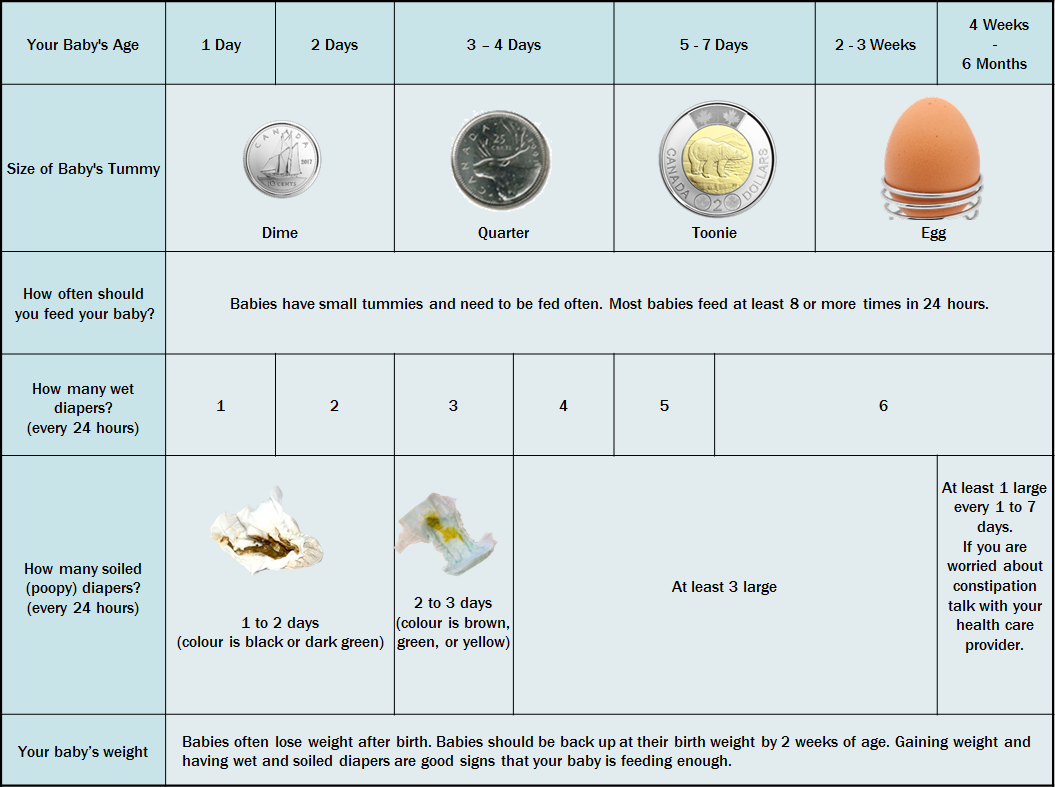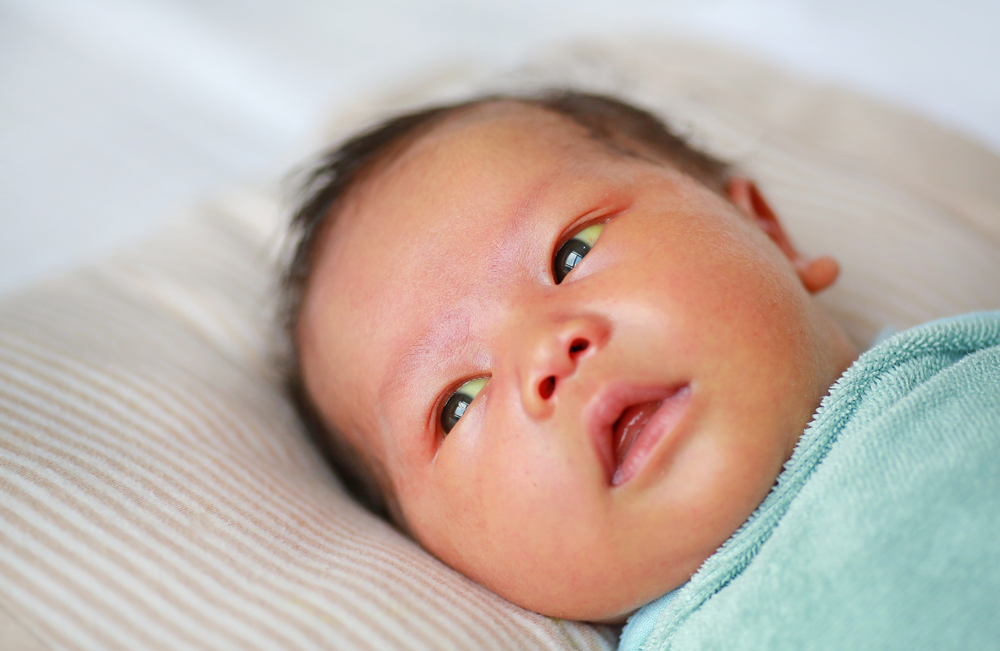What is bilirubin?
- Bilirubin is a yellow pigment that is released when the liver breaks down red blood cells.
- Because your baby’s liver is still immature, it cannot remove bilirubin fast enough, so it builds up in the blood. This causes your baby’s skin to turn yellow (known as jaundice).
- As your baby eats (breastfeeds/chestfeeds or formula feeds), the bilirubin is removed from their body when they poop and pee.
Where will I see the jaundice on my baby?
Jaundice usually starts on the face and eyes. Then it spreads to your baby’s body and finally to their arms and legs. Most cases of jaundice are normal and not harmful and go away within a few days or weeks with no special treatment.
How do I prevent jaundice?
- Your baby gets rid of the bilirubin through pooping and peeing.
- For your baby to poop and pee, they need to be feeding well.
- Breastfeed/chestfeed/bottle feed your baby often; at least eight times in 24 hours (day and night).
See the chart below for how often your baby should be pooping and peeing.

How do I know if my baby has a high bilirubin level?
- Bilirubin levels are measured with a blood test or with a light machine that measures bilirubin in the skin.
- Pediatricians recommend that babies should have their bilirubin levels checked before they go home.
- Parents may be given a copy of a form that looks like this Discharge Information – Newborn Jaundice form. It shows what the bilirubin level was in the hospital and if it needs to be checked again. Some babies need to have another blood test after they get home. If you were not given any instructions about the jaundice form, call your doctor, public health nurse or other health-care provider.
- If the hospital is using a form like this, your health-care provider will check one of the boxes on the form which explains what you need to do. See below for what the boxes look like.

When should I be concerned about my baby’s jaundice? What should I do?
A high bilirubin (jaundice) level can be dangerous. Call your baby’s health-care provider and ask for a same-day appointment if your baby:
- starts to turn yellow (skin, whites of the eyes, arms and legs) after you get home
- is getting more yellow or orange (skin, whites of eyes, arms and legs)
- will not breastfeed/chestfeed or bottle feed
- is too sleepy to feed for two or more feeds
- is sleepy/difficult to wake up
If you cannot get a hold of your baby’s doctor that day, contact your public health nurse or go to your nearest emergency department, health centre or nursing station.
Did you know?
Breastfeeding/chestfeeding is a learned skill for parents and babies. It requires patience and practice. Get help right away if breastfeeding/chestfeeding is not going well for you and your baby.
For more information on breastfeeding/chestfeeding, see Breastfeeding/Chestfeeding – Parenting in Manitoba.


